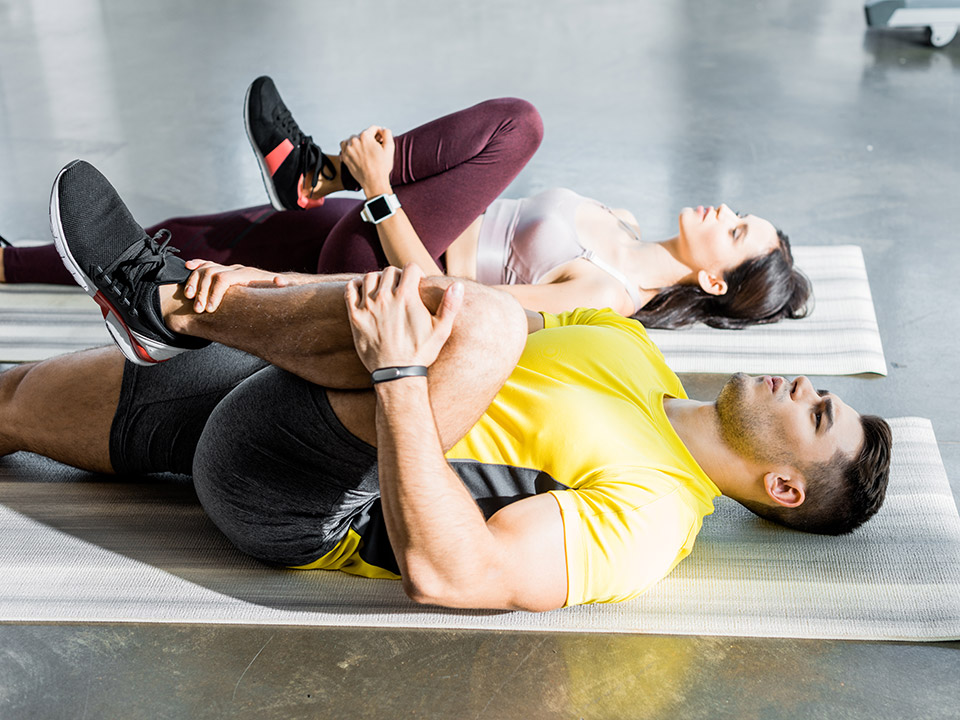Stretching is an essential part of any workout routine. It helps to improve flexibility, prevent injuries, and increase range of motion. However, many people are unsure of the best ways to stretch before and after a workout. In this blog post, we will discuss the importance of stretching, the different types of stretches, and the best ways to incorporate them into your pre- and post-workout routine.
The Importance of Stretching
Before we dive into the best ways to stretch, let’s first understand why stretching is important. When we exercise, our muscles contract and become tighter. This can lead to muscle imbalances and a limited range of motion. Stretching helps to counteract this by lengthening the muscles and improving their flexibility. It also increases blood flow to the muscles, which can help with muscle recovery and reduce soreness.
Stretching also plays a crucial role in injury prevention. When our muscles are tight, they are more susceptible to strains and tears. By regularly stretching, we can improve the elasticity of our muscles, making them less susceptible to injuries. Additionally, stretching can help to improve our posture and reduce muscle tension, leading to better overall physical health.
The Different Types of Stretches
There are two main types of stretches: static and dynamic. Static stretches involve holding a position for a certain amount of time, while dynamic stretches involve moving through a range of motion. Both types of stretches have their benefits and should be incorporated into your pre- and post-workout routines.
Static stretches are best done after a workout when your muscles are warm and pliable. They help to improve flexibility and range of motion. Some examples of static stretches include hamstring stretches, quad stretches, and shoulder stretches. Hold each stretch for 15–30 seconds and repeat it 2-3 times.
Dynamic stretches, on the other hand, are best done before a workout. They help to warm up the muscles and prepare them for the upcoming activity. Dynamic stretches involve moving through a range of motion, such as leg swings, arm circles, and walking lunges. These stretches should be done for 10–15 repetitions on each side.
The Best Ways to Stretch Before a Workout
Before starting your workout, it’s essential to warm up your muscles and prepare them for the activity ahead. Here are some of the best ways to stretch before a workout:
1. Start with a light cardio warm-up
A light cardio warm-up, such as jogging or jumping jacks, can help to increase blood flow to your muscles and raise your body temperature. This will make your muscles more pliable and ready for stretching.
2. Incorporate dynamic stretches
As mentioned earlier, dynamic stretches are best done before a workout. They help to warm up the muscles and prepare them for the upcoming activity. Make sure to incorporate dynamic stretches that target the muscles you will be using during your workout.
3. Focus on the major muscle groups
When stretching before a workout, it’s essential to focus on the major muscle groups that will be used during your workout. This includes your legs, back, chest, and arms. By stretching these muscles, you can improve their flexibility and range of motion, reducing the risk of injury.
The Best Ways to Stretch After a Workout
After a workout, your muscles are warm and pliable, making it the perfect time to incorporate static stretches. Here are some of the best ways to stretch after a workout:
1. Cool down with light cardio
Similar to before a workout, it’s essential to cool down with some light cardio after your workout. This will help to gradually lower your heart rate and prevent blood from pooling in your muscles.
2. Hold static stretches for 15–30 seconds
As mentioned earlier, static stretches should be held for 15–30 seconds and repeated 2-3 times. Make sure to focus on the major muscle groups and any areas that feel particularly tight or sore.
3. Use a foam roller
In addition to static stretches, using a foam roller can also be beneficial after a workout. Foam rolling helps to release tension in the muscles and can aid in muscle recovery. Roll over the targeted muscle for 30–60 seconds, focusing on any areas that feel particularly tight.
Incorporating Stretching into Your Routine
Now that you know the best ways to stretch before and after a workout, it’s essential to make it a regular part of your routine. Here are some tips for incorporating stretching into your routine:
1. Make it a habit
Just like with any other healthy habit, consistency is key. Make stretching a regular part of your pre and post-workout routine to reap its benefits.
2. Listen to your body
Pay attention to how your body feels and adjust your stretching routine accordingly. If a particular stretch feels uncomfortable or painful, stop and try a different stretch.
3. Don’t skip it
Even on days when you’re short on time, don’t skip stretching. It only takes a few minutes, and the benefits are worth it.
Conclusion
Stretching is an essential part of any workout routine. It helps to improve flexibility, prevent injuries, and increase range of motion. By incorporating dynamic stretches before a workout and static stretches after a workout, you can reap the benefits of stretching and improve your overall physical health. Make sure to listen to your body and make stretching a regular part of your routine. Your body will thank you for it!

